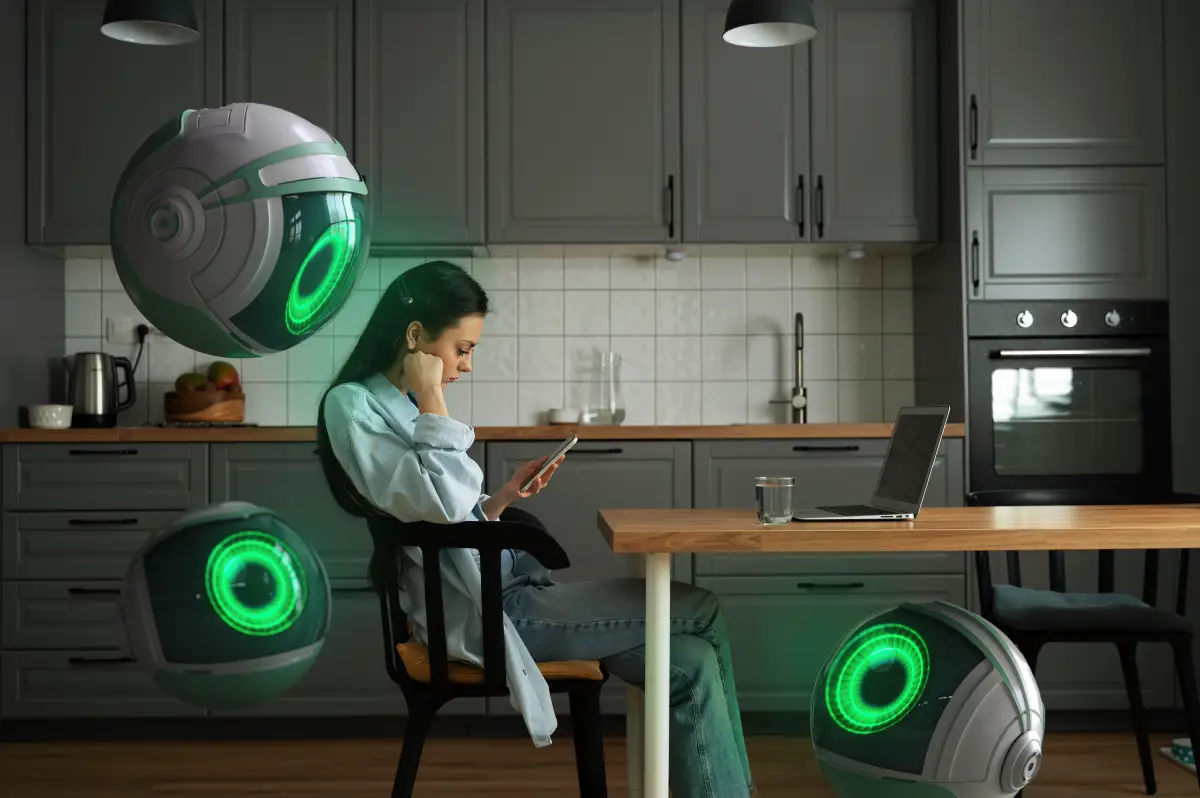Expert Insights On How Robots Can Enhance Home Theme Design:
Introduction:
In the evolving landscape of interior design, robotics and artificial intelligence (AI) are revolutionizing how homeowners conceptualize and realize their living spaces. These technologies offer innovative solutions that blend functionality with aesthetics, enabling personalized and efficient design processes.
Improves Design Processes with AI:
“AI-powered tools have significantly expedited the interior design workflow. By analyzing user preferences, spatial dimensions, and functional requirements, these systems can generate multiple design options swiftly. This rapid prototyping allows homeowners to visualize various layouts and styles, facilitating quicker decision-making and reducing the time from concept to implementation”. Says Michael Lahyani, CEO of Property Finder Group
Enhance Personalization through Data Analysis:
“Robotic systems equipped with AI can delve into vast datasets to understand individual tastes and lifestyle needs. By assessing factors such as color preferences, furniture styles, and usage patterns, these technologies can curate design solutions that resonate with the homeowner’s personality and daily routines, ensuring a harmonious living environment”. Says Haider Khan, CEO, Bayut
Smart Home Innovation Meets Interior Design:
“The integration of robotics in interior design extends to smart home functionalities. Automated systems can control lighting, climate, and security, adapting to the occupants’ habits and preferences. This seamless incorporation of technology not only enhances comfort and convenience but also contributes to energy efficiency and sustainability”. Says Allen Seavert, Director of Robotics Integration
Virtual Collaboration and Visualization:
“Robotic and AI tools enable virtual collaboration between homeowners and designers, regardless of geographical constraints. Through immersive simulations and real-time modifications, stakeholders can experiment with different design elements, ensuring that the outcome aligns with the envisioned aesthetic and functional goals”. Says Gerald Vogt, Founder and Director, STÄUBLI
Optimizing Space Utilization:
“Advanced robotics can assist in optimizing space utilization, especially in compact living areas. By analyzing spatial configurations and movement patterns, these systems can suggest furniture arrangements and storage solutions that maximize utility without compromising on style”. Says Charanjeet Ailsinghani, CEO of Global Market Insights
Advanced Eco-Friendly Design Solutions:
“Robotics and AI contribute to sustainable interior design by recommending eco-friendly materials and energy-efficient solutions. By evaluating the environmental impact of various design choices, these technologies support homeowners in making decisions that align with sustainability goals, fostering responsible living spaces”. Says Jerry Liu, CEO of Dobot Robotics
Blending Creativity with Automation through Visual Merging
“Robotics and AI extend beyond mere functional issues to aid in the creative visualization of the home design process. With image-combining and generative tools, homeowners can combine disparate design sources into one single preview for decision-making, truly merging the very modern minimalism with an earthy rustic charm. This allows clients to play with combinations and configurations that might not ever become part of their conscious building thought processes from the very beginning, thereby ensuring that the resultant design is not solely functionally inclined but speaks creatively of its design identity.” Says, Ava Morgan, CEO of CombineImages.Online
Educational and Lifestyle Adaptability in Design
“Robotics and AI can also shape home environments to support learning, wellness, and lifestyle development. For example, adaptive robotic systems can reconfigure multipurpose rooms into study zones, fitness areas, or creative studios based on daily routines. This adaptability not only optimizes physical space but also nurtures personal growth by aligning the home design with the occupants’ evolving educational, professional, and recreational needs.” Says Marcus Lam, Director of Admissions & Recruitment, TISOH
Conclusion:
In conclusion, robotics and AI are reshaping the future of home design by offering smarter, faster, and more personalized solutions. From streamlining the creative process to enhancing sustainability and functionality, these technologies empower homeowners to bring their unique visions to life with ease. Embracing robotic innovation not only improves efficiency but also delivers beautifully tailored living spaces that reflect both modern convenience and individual style.

Leave a Reply